Key moments from the State Funeral of Her Majesty Queen Elizabeth II
As Queen Elizabeth II’s funeral takes place people from across the world honor this remarkable monarch
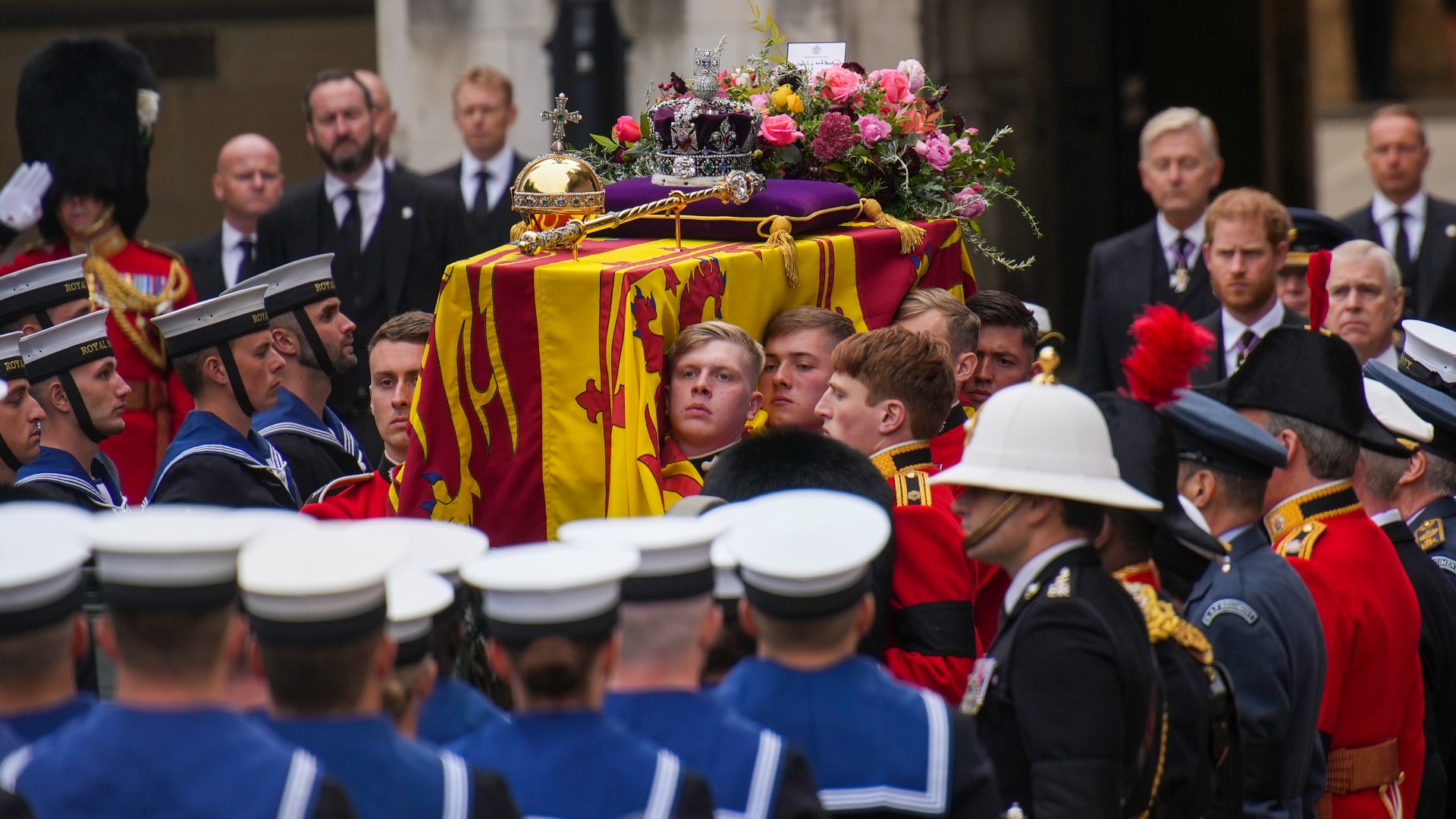

Queen Elizabeth II’s State Funeral is taking place today, Monday, September 19, 2022, and sees the Royal Family, as well as royals, politicians, and leaders from across the world pay tribute.
- Her Majesty’s funeral service is being watched by people from across the world.
- The day will include several processions by members of the Royal Family as well as two services.
- Queen Elizabeth II’s funeral service will be followed by a Committal Service later on in Windsor.
Eleven days after Buckingham Palace made the solemn announcement that Queen Elizabeth II had died at Balmoral Castle, Britain’s longest-reigning monarch is being laid to rest. Attended by 2,000 guests from around the world, including the extended Royal Family, European royalty, and world leaders Queen Elizabeth II’s State Funeral is also being watched by many across the globe.
Consisting of multiple processions, the State Funeral Service at Westminster Abbey and a Committal Service at St George’s Chapel, here we share the key moments from the State Funeral of Her Majesty, Queen Elizabeth II.
Procession to Westminster Abbey begins - 10.44am
The Queen’s coffin is lifted from the catafalque at Westminster Hall where it has been Lying-In-State since the afternoon of Wednesday, September 14, and where mourners from across the world had been paying their respects. Ahead of this, many members of the Royal Family including Camilla, the Queen Consort, the Princess of Wales, Prince George of Wales, Princess Charlotte of Wales, and Duchess of Sussex arrived at Westminster Abbey.
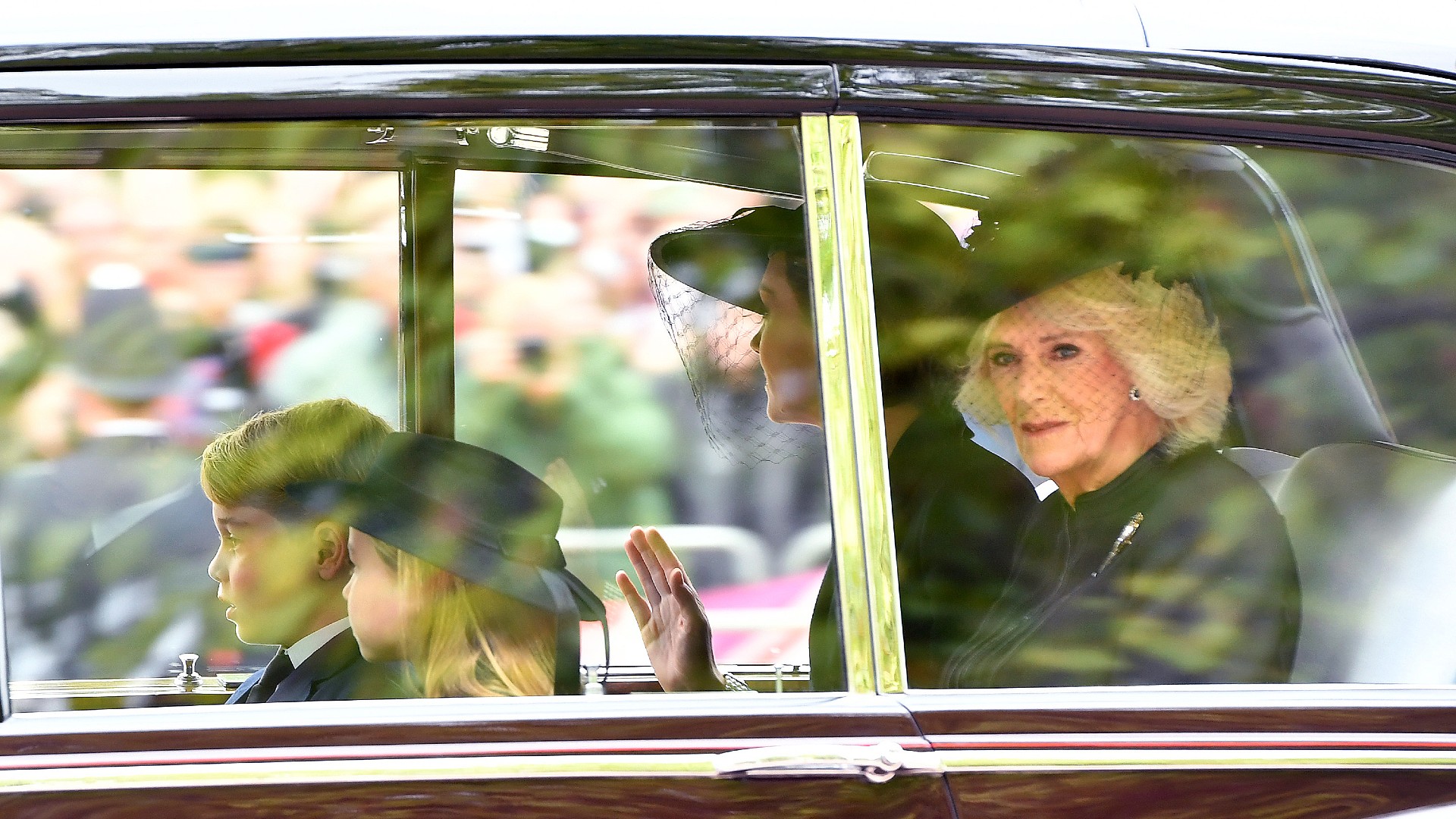
Her Majesty’s coffin begins its journey from Westminster Hall to Westminster Abbey, carried in the State Gun Carriage of the Royal Navy drawn by 142 sailors. Upon Her Majesty’s coffin, which is draped in the royal standard which represents the Sovereign and the United Kingdom, are the Imperial State Crown, as well as the Sovereign’s Orb and Sceptre and flowers in pink and red tones.
Senior members of the Royal Family including King Charles, the Prince of Wales, Duke of Sussex, walk behind the late monarch’s coffin in a solemn procession. The first row includes the King, Princess Royal, Duke of York, and Earl of Wessex.
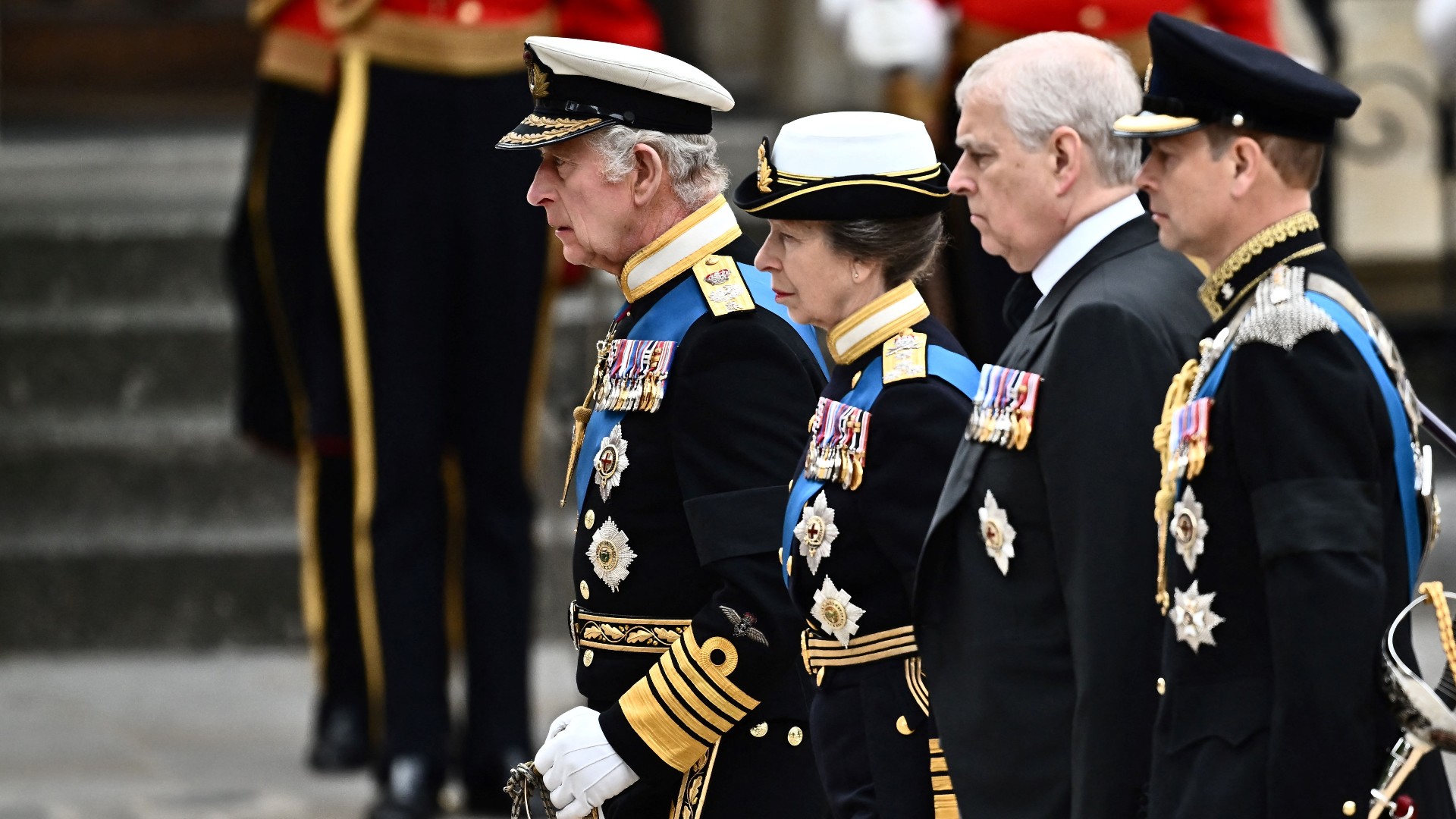
Following them in the second row is the Prince of Wales, Duke of Sussex, and Peter Phillips, and other members of the Royal Family in the procession are the late Queen’s nephew, the Earl of Snowdon, her cousin the Duke of Gloucester, and Princess Anne’s husband, Vice Admiral Sir Timothy Laurence.
Sign up for the woman&home newsletter
Sign up to our free daily email for the latest royal and entertainment news, interesting opinion, expert advice on styling and beauty trends, and no-nonsense guides to the health and wellness questions you want answered.
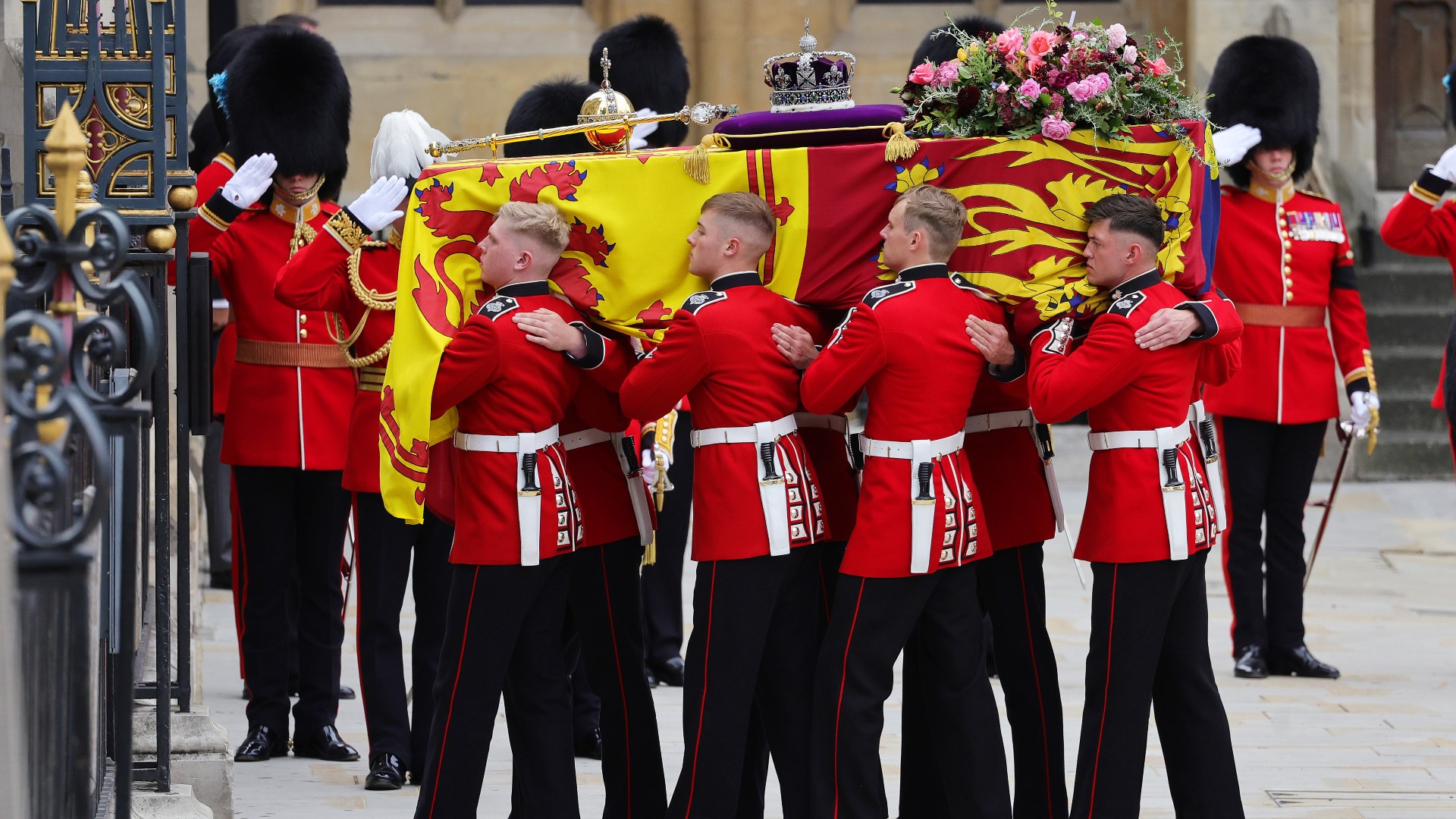
The Procession is led by the Pipes and Drums of the Scottish and Irish regiments as well as members of the Royal Air Force and the Gurkhas. The route is lined by not only well-wishers paying tribute to Britain’s longest-reigning monarch, but the Royal Navy and Royal Marines.
A guard of honor also stands in Parliament Square consisting of all three military services, the army, navy and air force, as well as a Royal Marines Band.
Queen Elizabeth II’s State Funeral begins - 11am
Following the procession to Westminster Abbey and the arrival of Her Majesty’s coffin at 11.00am, Queen Elizabeth II’s State Funeral begun. Before the service the tenor bell sounded every minute for 96 minutes, reflecting her extraordinary life. The Dean of Westminster, The Very Reverend David Hoyle leads the service with a sermon given by the Archbishop of Canterbury, the Most Reverend and Right Honorable Justin Welby.
The service is sung by the Choir of Westminster Abbey and the Choir of the Chapel Royal, St James’s Palace, under the direction of James O’Donnell, Organist, and Master of the Choristers. The State Trumpeters of the Household Cavalry are led by Trumpet Major Julian Sandford and Sub-Organist Peter Holder plays the organ.
The Queen’s coffin is carried through the nave and quire of Westminster Abbey and placed upon a platform.
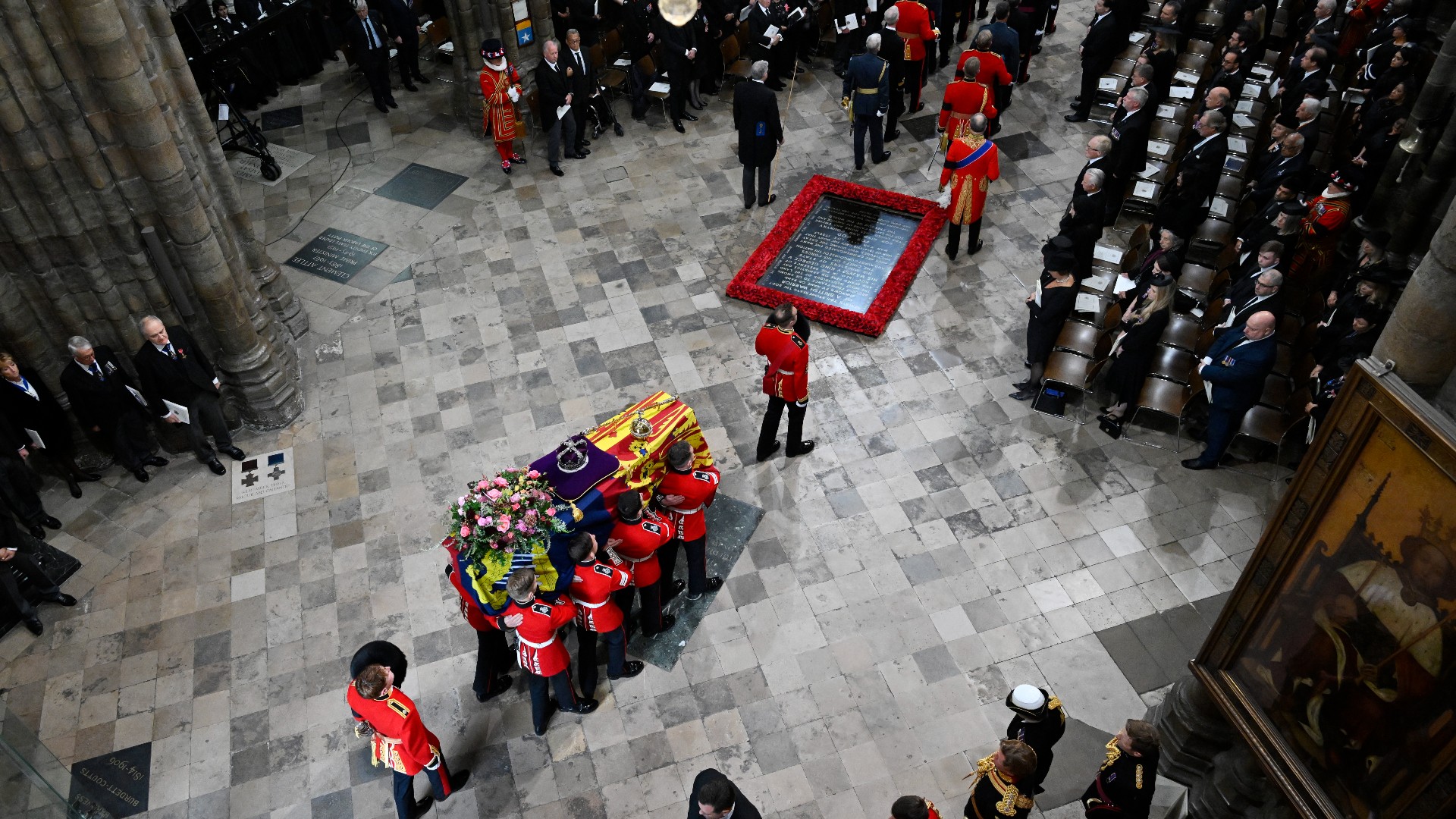
Everyone inside Westminster Abbey stands as the Procession of the Coffin enters the Abbey, followed by members of the Royal Family. Prince George and Princess Charlotte of Wales joined their father the Prince of Wales walking behind their great-grandmother’s coffin as it made its way up the Abbey. The Queen Consort, Princess of Wales, Countess of Wessex and Duchess of Sussex also walked alongside them.
Beginning the service, the Dean of Westminster declares, “In grief and also in profound thanksgiving we come to this House of God, to a place of prayer, to a church where remembrance and hope are sacred duties. Where Queen Elizabeth was married and crowned, we gather from across the nation, from the Commonwealth and from the nations of the world, to mourn our loss. To remember her long life of selfless service and in sure confidence to commit her to the mercy of God, our Maker and Redeemer.”
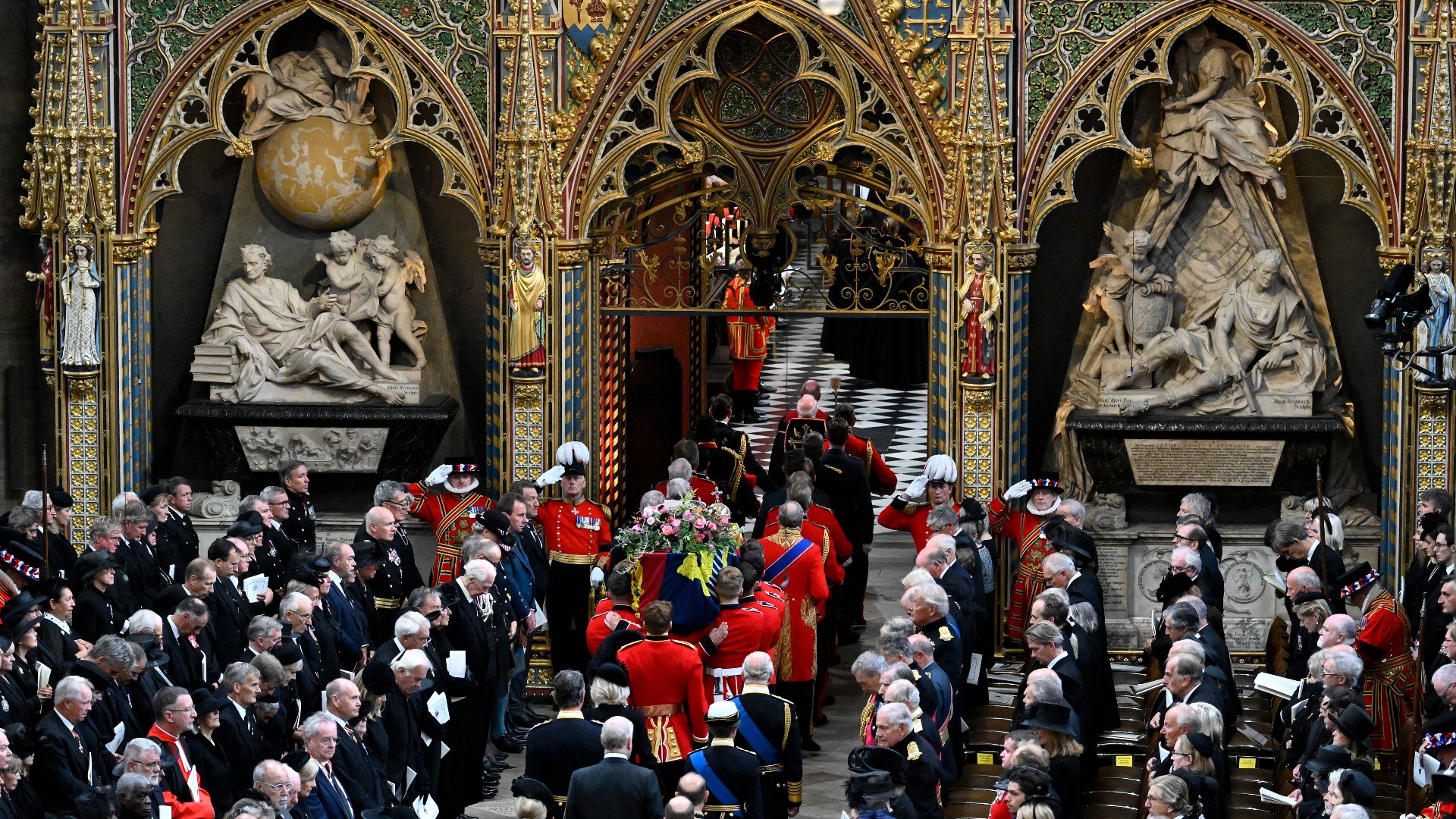
He continues, “With gratitude we remember her unswerving commitment to a high calling over so many years as Queen and Head of the Commonwealth. With admiration, we recall her life-long sense of duty and dedication to her people. With thanksgiving we praise God for her constant example of Christian faith and devotion. With affection we recall her love for her family and her commitment to the causes she held dear."
During the service, UK Prime Minister Liz Truss reads the second Lesson, followed by The Lord’s My Shepherd - a hymn that was also sung at the wedding of Her Majesty and Prince Philip, Duke of Edinburgh in November 1947.
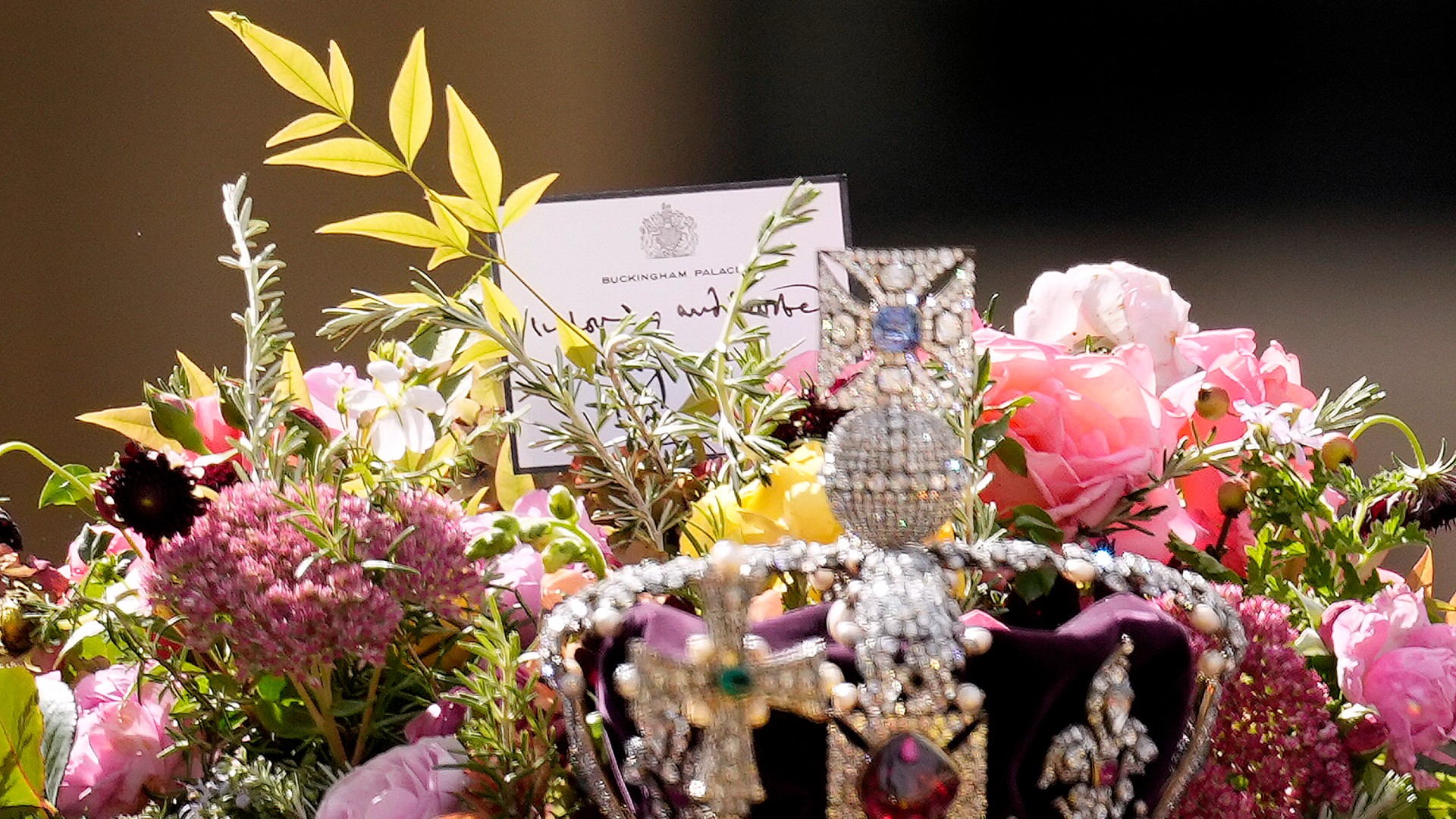
In his sermon the Archbishop of Canterbury reflects upon the example the Queen set and spoke of how he knows the King shares the “same faith and hope in Jesus Christ” as Her Majesty, as well as the same sense of “service and duty”.
The Archbishop of Canterbury gives the Commendation and the Dean of Westminster pronounces the Blessing. As the service draws to an end, everyone attending the funeral remains standing as The Last Post is played by the State Trumpeters of the Household Cavalry from the steps of the Lady Chapel.
A Two Minute Silence is observed across the UK, followed by The Reveille sounded by the State Trumpeters. The congregation of Queen Elizabeth II’s State Funeral sings God Save The King, followed by the Sovereign’s Piper of the Royal Regiment of Scotland playing “Sleep, dearie, sleep”.
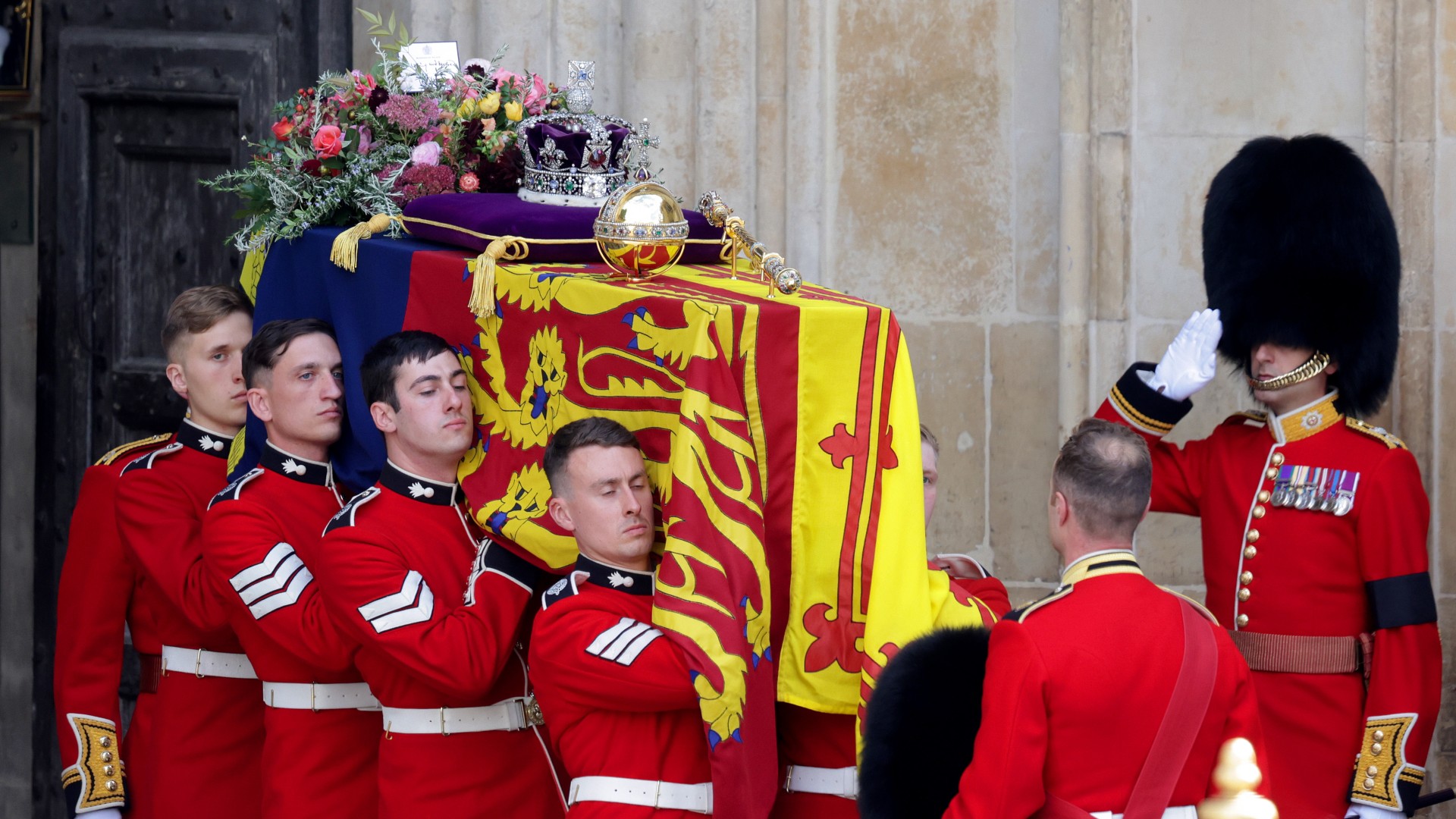
Everyone remains standing as the coffin and processions begin to leave Westminster Abbey at 12:09pm with the Sub-Organist playing Fantasia in C minor BWV 562 by Johann Sebastian Bach. Much of the music played during Queen Elizabeth II’s funeral was of special significance to the late monarch. ‘Love Divine’ was sung in an arrangement first heard at the wedding of the Prince and Princess of Wales in 2011, while the ‘O Taste and See’ was composed by Ralph Vaughan Williams for the Queen’s coronation in 1953.
Procession from Westminster Abbey to Wellington Arch - 12.15pm-1.40pm
After Queen Elizabeth II’s State Funeral service, her coffin is now on procession from Westminster Abbey to Wellington Arch. The route is lined with military personnel and police officers. Big Ben in the Elizabeth Tower tolls at one-minute intervals throughout the procession and gun salutes are also being fired every minute from nearby Hyde Park.
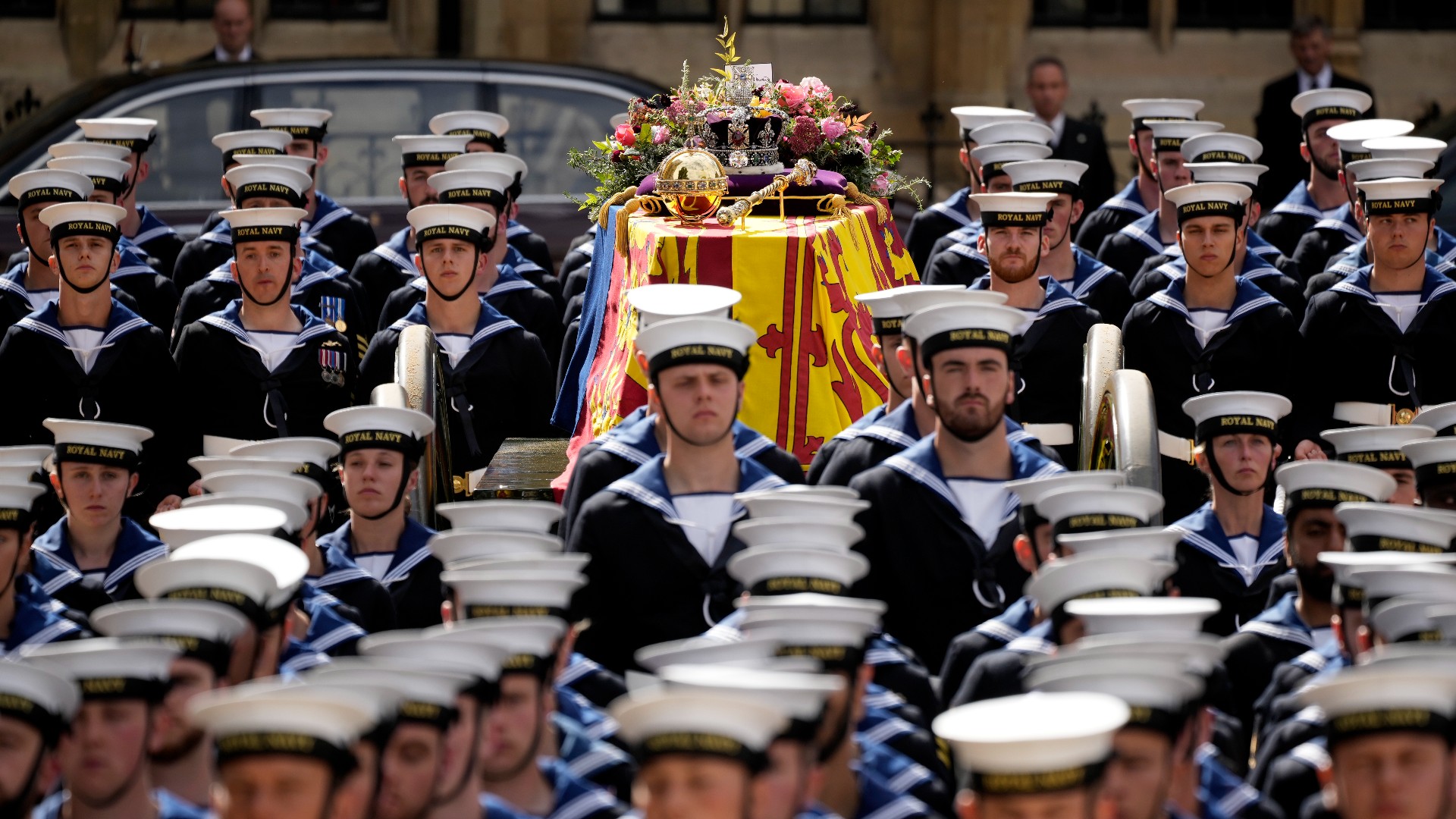
At designated viewing areas along the route, people can watch the poignant procession and pay their respects to Her Majesty. The procession is led by the Royal Canadian Mounted Police and is made up of seven groups each with their own band, with the UK and Commonwealth’s armed forces, the police and NHS also involved.
The King walks in the procession behind Her Majesty’s coffin accompanied by Princess Anne, Prince Andrew, Prince Edward, Prince William and Prince Harry, while Camilla, the Queen Consort, Princess of Wales, Countess of Wessex, Duchess of Sussex, Prince George and Princess Charlotte follow the procession in cars.
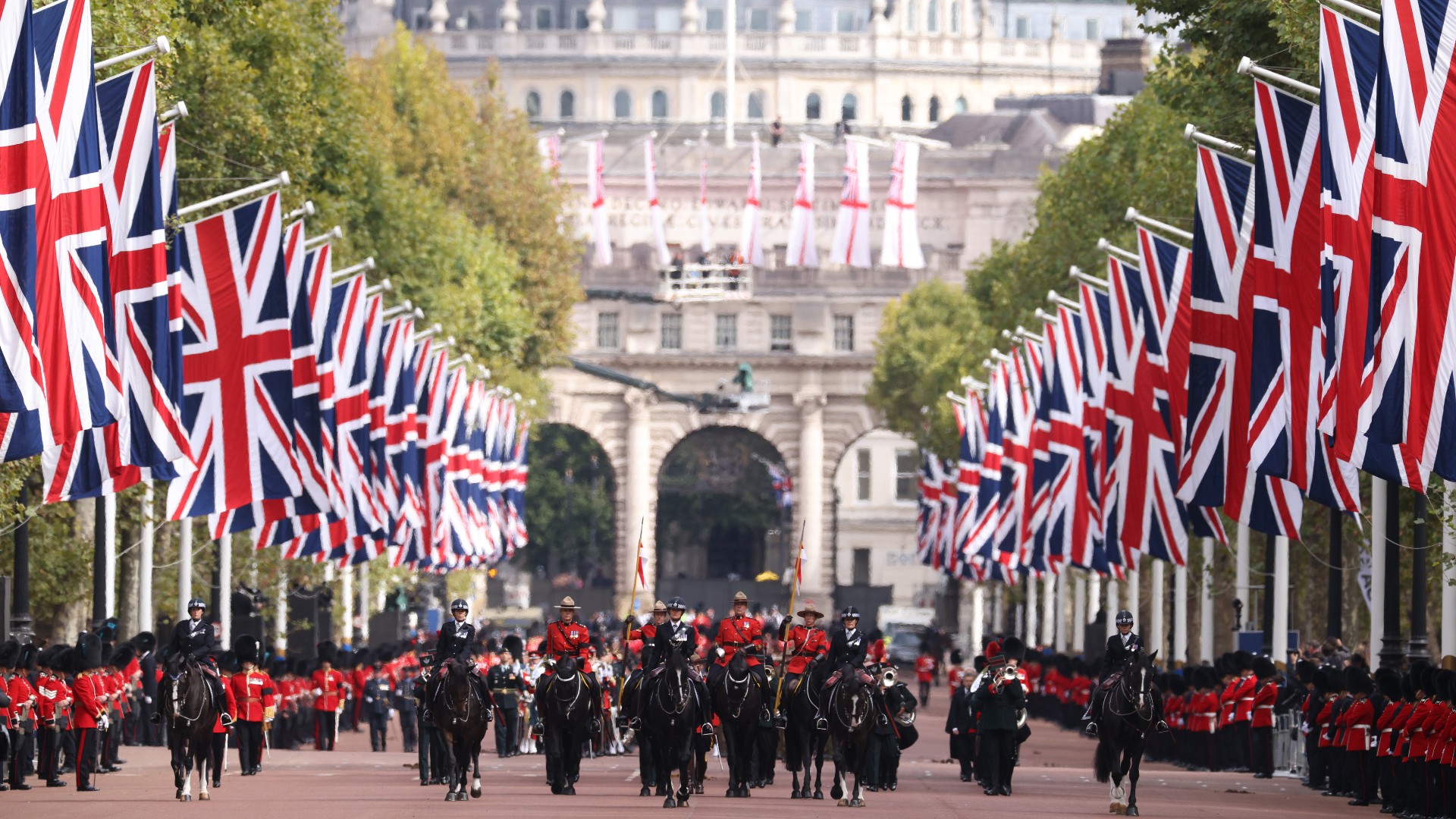
During the procession, Her Majesty’s coffin travels past the monarch’s official London home, Buckingham Palace, where she appeared on the balcony during so many historic occasions over the course of her remarkable reign. Palace employees stand in silence as a mark of respect.
After reaching Wellington Arch in the middle of Hyde Park corner the procession travels under the arch itself, before Queen Elizabeth’s coffin is transferred to the State Hearse to travel to Windsor Castle. After saluting the King, Princess Anne follows behind her late mother’s coffin in a car as they make their way to Berkshire.
Procession to Windsor Castle - 3.10pm
The Queen’s coffin travels to Windsor Castle by hearse and as it approaches Windsor is escorted down the road through the Berkshire countryside by the Household Cavalry, the Sovereign’s Escort, Pipes and Drums and the Band of the Household Cavalry.
The Sebastopol and Curfew Tower Bells at the castle are tolled every minute and gun salutes are fired from the grounds. The procession reaches the top of the Long Walk around 3:20pm and travels all the way up this three mile long avenue which is lined by members of the armed forces.
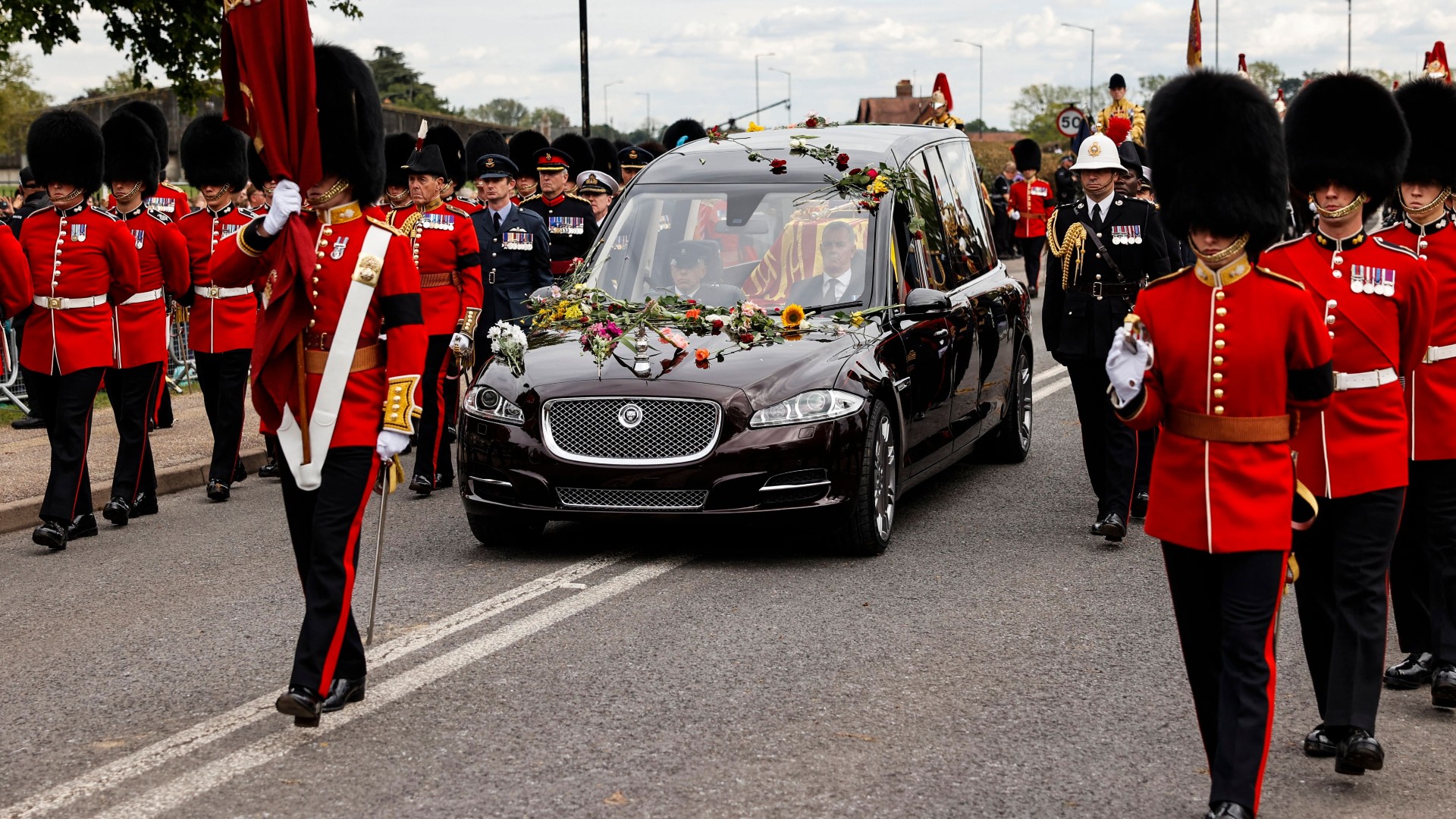
The public are able to watch the procession with access to the Long Walk allowed and many people lined the way into Windsor to pay their respects. The Queen's pony 'Emma' and the grooms who work in the Royal Mews are also standing to one side of the Long Walk as the procession goes by.
As the procession enters Windsor Castle two of Her Majesty’s corgis are also seen - Sandy and Muick - to the right of the arch. Senior members of the Royal Family, led by the King, later joined the procession in the Quadrangle of Windsor Castle at around 4pm.
Queen Elizabeth II’s Committal Service at St George’s Chapel - 4.20pm
The Queen’s coffin enters St George’s Chapel in Windsor for a Committal Service attended by around 800 guests, many of whom are current or former staff members.
The service is conducted by The Right Reverend David Conner, KCVO, the Dean of Windsor, with a Blessing from the Archbishop of Canterbury, The Right Honorable Justin Welby. As the Queen’s coffin enters St George’s Chapel and moves towards the Quire, the choir sings Psalm 121, followed by the Russian Kontakion of the Departed.
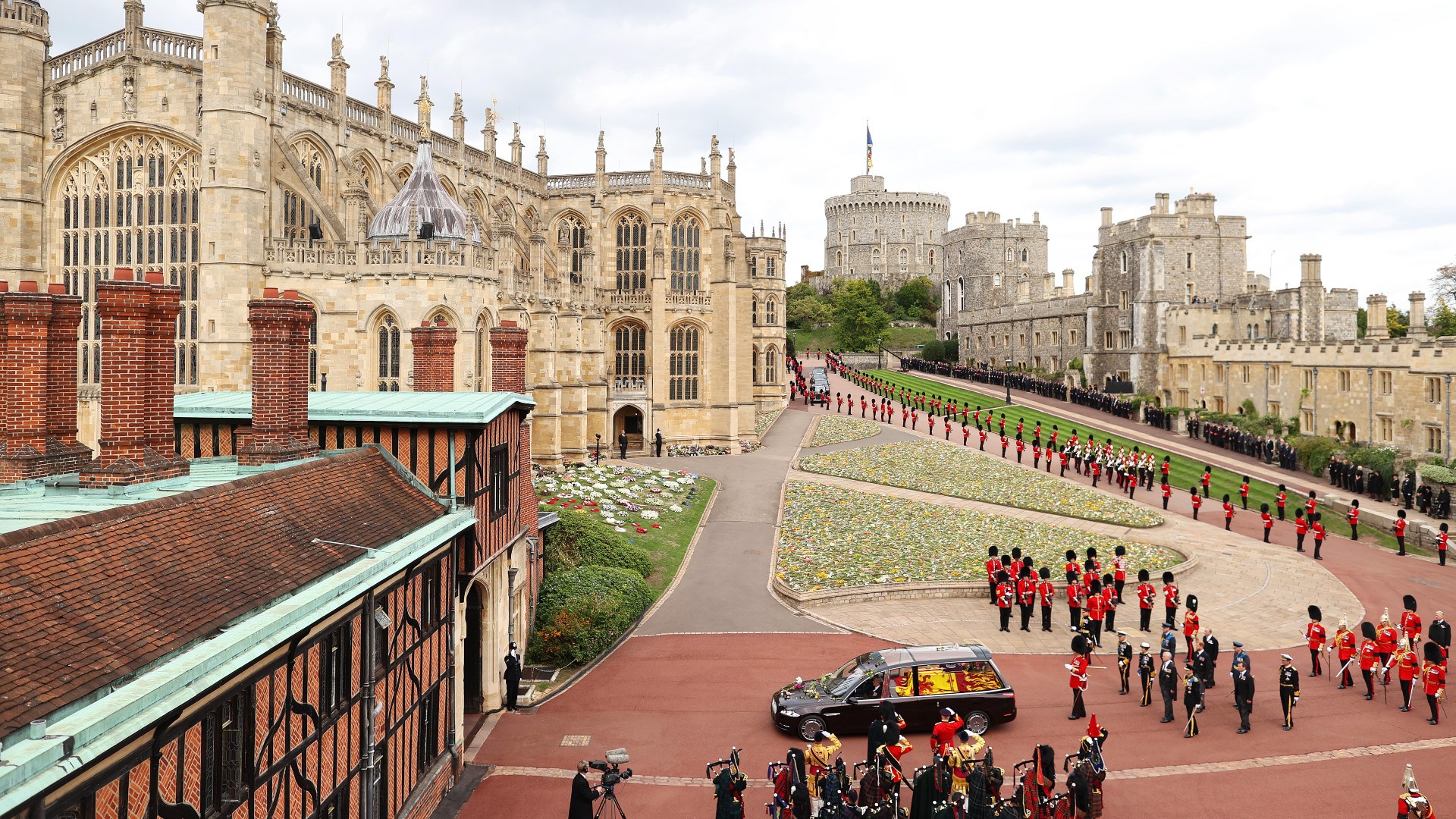
The Dean of Windsor reflected upon the late Queen’s “calm and dignified presence” and how it has given people the confidence to face the future with "hope and courage".
“As, with grateful hearts, we reflect on these and all the many other ways in which her long life has been a blessing to us, we pray that God will give us grace to honor her memory by following her example, and that, with our sister Elizabeth, at the last, we shall know the joys of life eternal,” he said.
The poignant service also includes several important traditions that symbolize the Queen’s reign coming to an end. The Imperial State Crown, the Sovereign’s Orb, and Scepter, are removed from the top of Her Majesty’s coffin and are received back by the Dean of Windsor, who places them on the high altar.
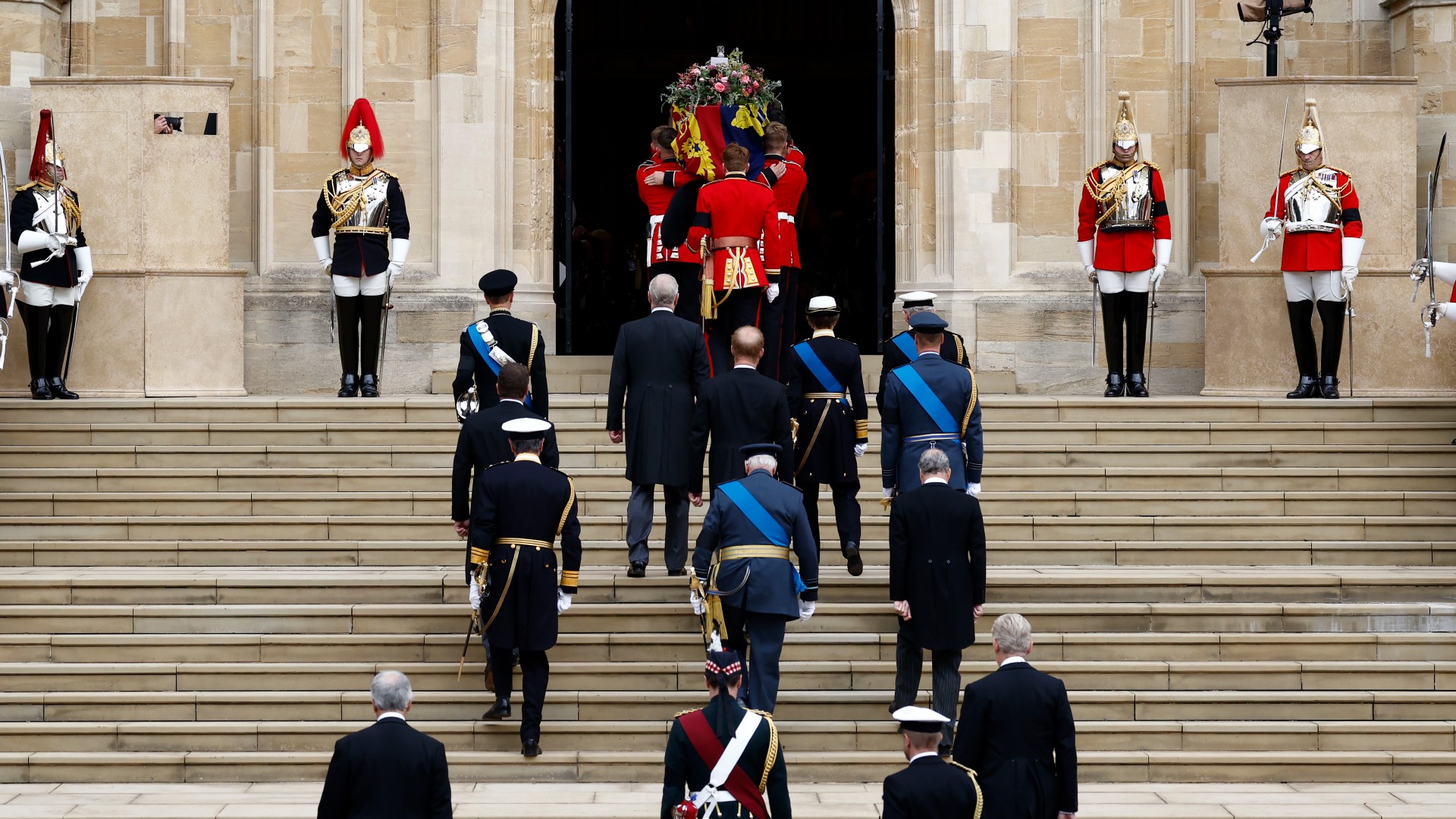
This signifies the separation of the Queen and her crown for the last time. Following the end of the final hymn, King Charles placed the Queen’s company camp color (the flag) of the Grenadier Guards on his mother’s coffin.
The Lord Chamberlain Baron Parker, who is the most senior official in the Royal Household, broke his wand of service and placed it on the Queen’s coffin, signaling the end of his service to the sovereign.
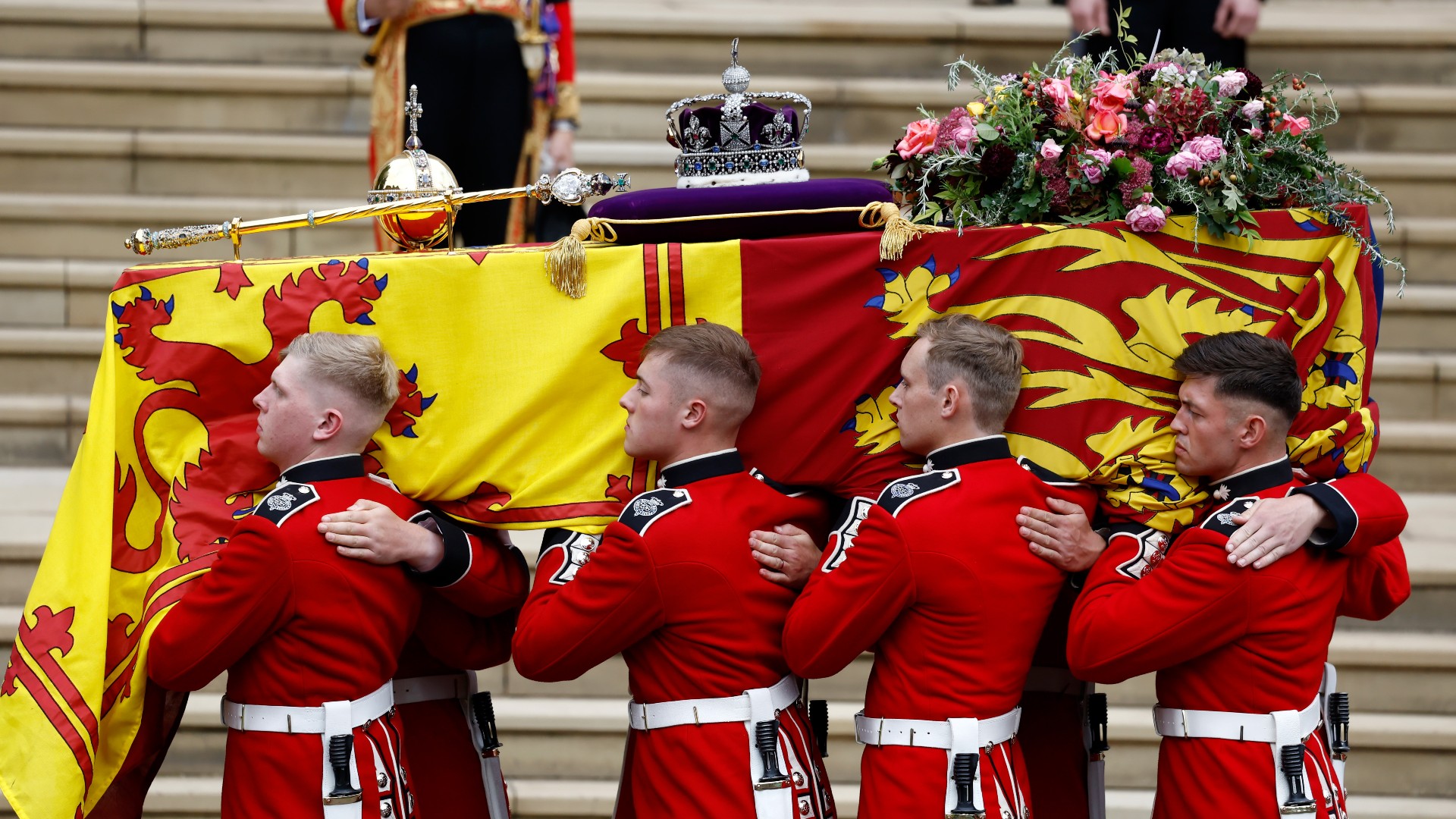
During the Committal Service the Queen’s coffin is lowered, the styles and titles of Queen Elizabeth II are proclaimed by the Garter King of Arms and the Sovereign’s piper plays - something Buckingham Palace has said was personally requested by the late Queen - before a blessing is then said. The National Anthem is sung and the Committal Service for Queen Elizabeth comes to a poignant end.
This evening around 19.30pm a private family service will be held. The Queen will be buried with her late husband, Prince Philip, Duke of Edinburgh, at the King George VI Memorial Chapel in St George’s Chapel.
Emma is a Royal Editor with eight years experience working in publishing. She specialises in the British Royal Family, ranging from protocol to outfits. Alongside putting her royal knowledge to good use, Emma knows all there is to know about the latest TV shows on the BBC, ITV and more. When she’s not writing about the latest royal outing or unmissable show to add to your to-watch list, Emma enjoys cooking, long walks and watching yet more crime dramas!
-
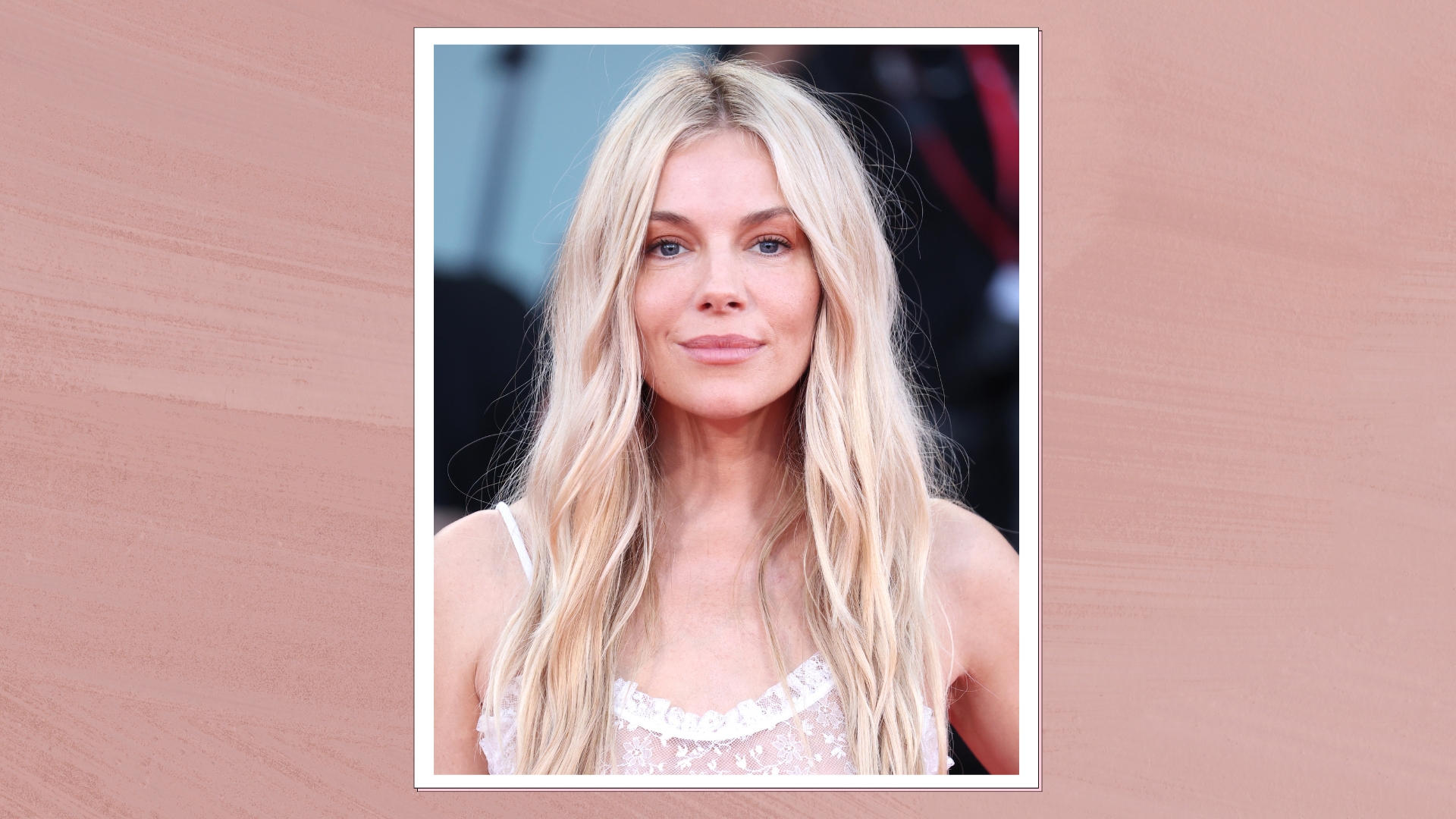 We're in awe of Sienna Miller's easy-going and 'piece-y' hairstyle and how perfect it is for spring
We're in awe of Sienna Miller's easy-going and 'piece-y' hairstyle and how perfect it is for springThis laid-back hairstyle is - quite literally - making waves this season
By Naomi Jamieson
-
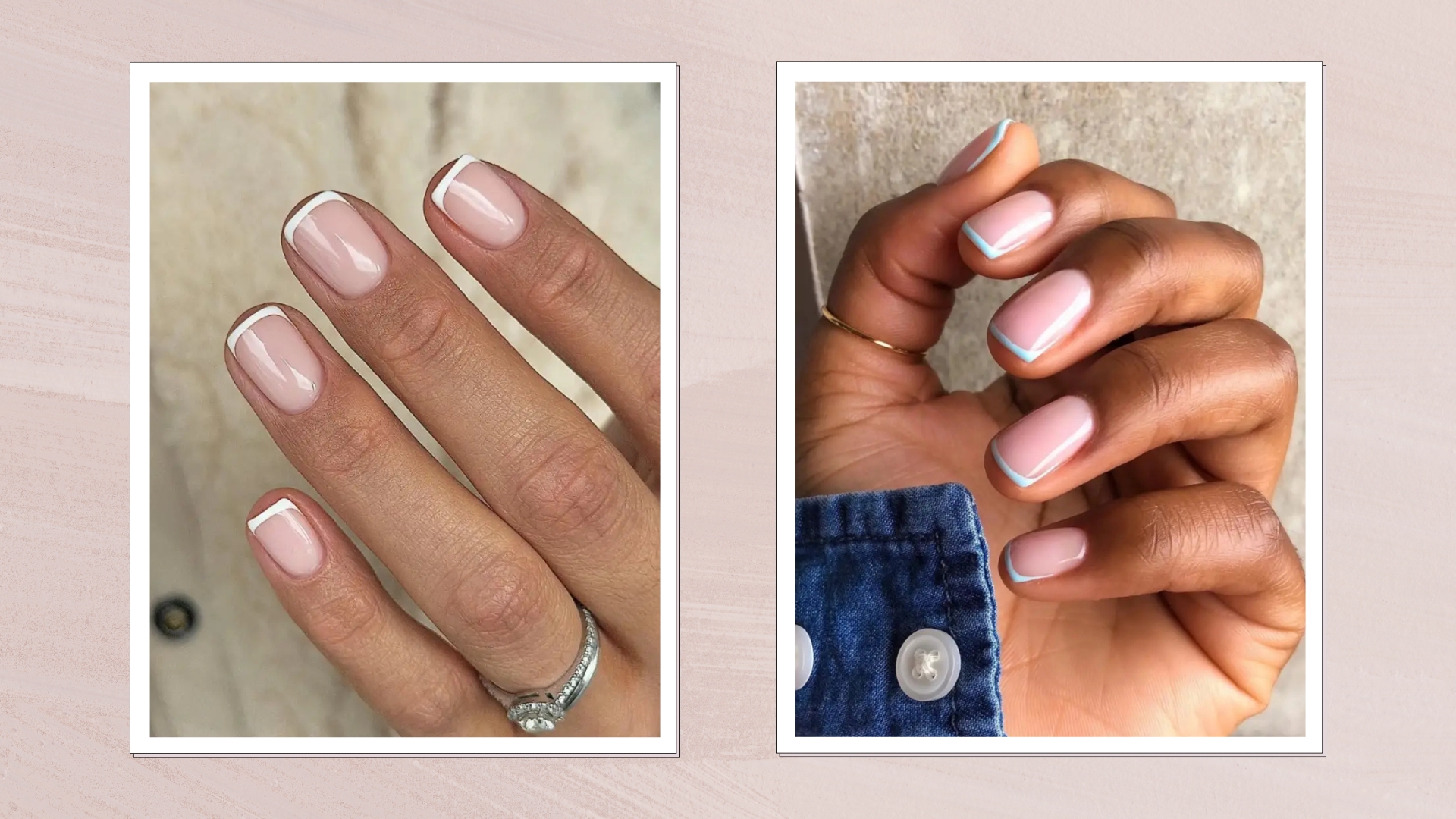 We never thought we'd see this 'dated' manicure make a chic comeback, but here it is - and we're on board
We never thought we'd see this 'dated' manicure make a chic comeback, but here it is - and we're on boardClean and angular, short square French tips are a go-to this season for a practical but stylish manicure...
By Naomi Jamieson
-
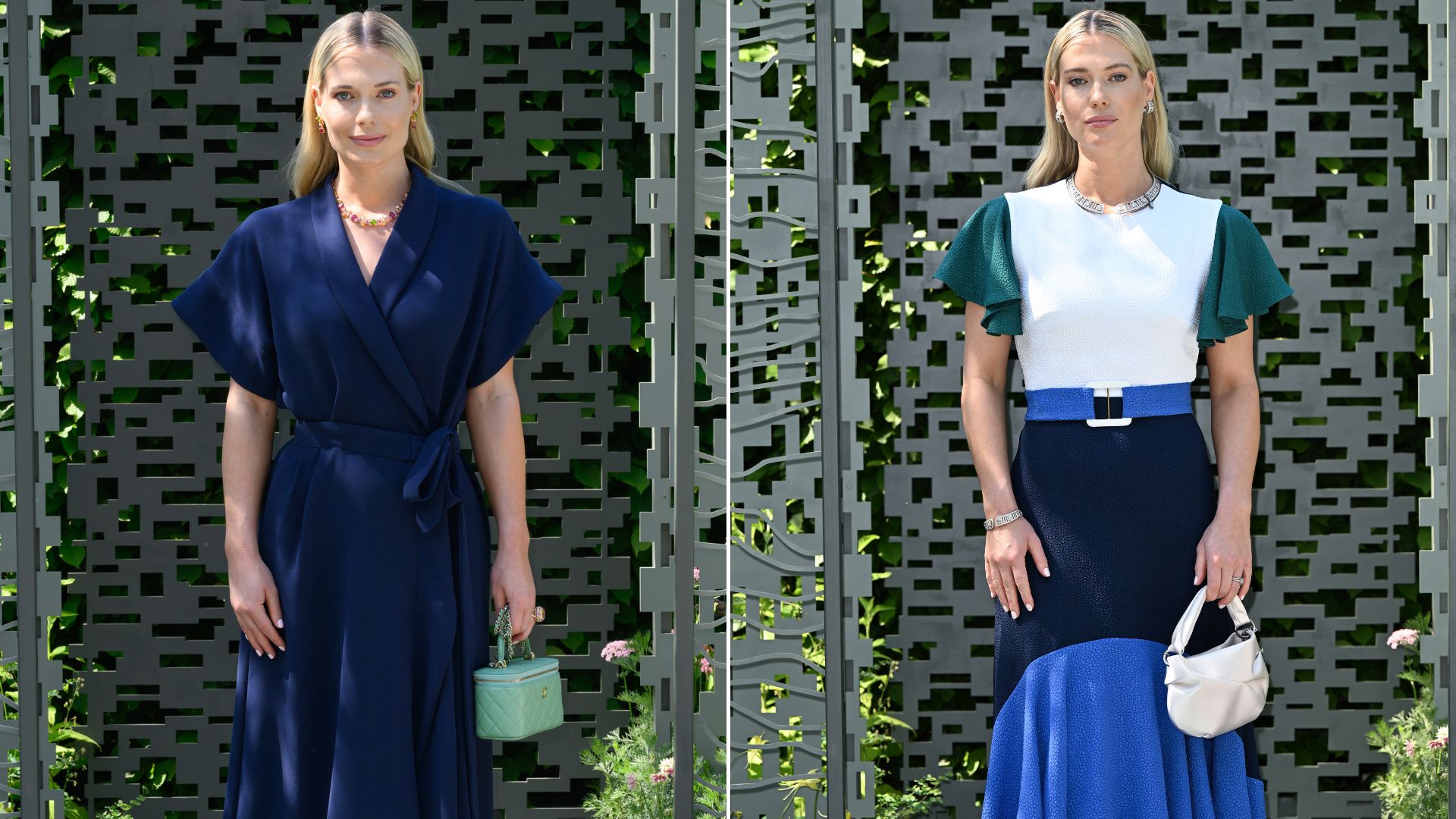 Princess Diana’s lookalike twin nieces have convinced us to jump on the micro bag trend after the Chelsea Flower Show
Princess Diana’s lookalike twin nieces have convinced us to jump on the micro bag trend after the Chelsea Flower ShowLady Eliza and Lady Amelia Spencer took different styling approaches with their micro bags at Chelsea Flower Show but we love both
By Emma Shacklock
-
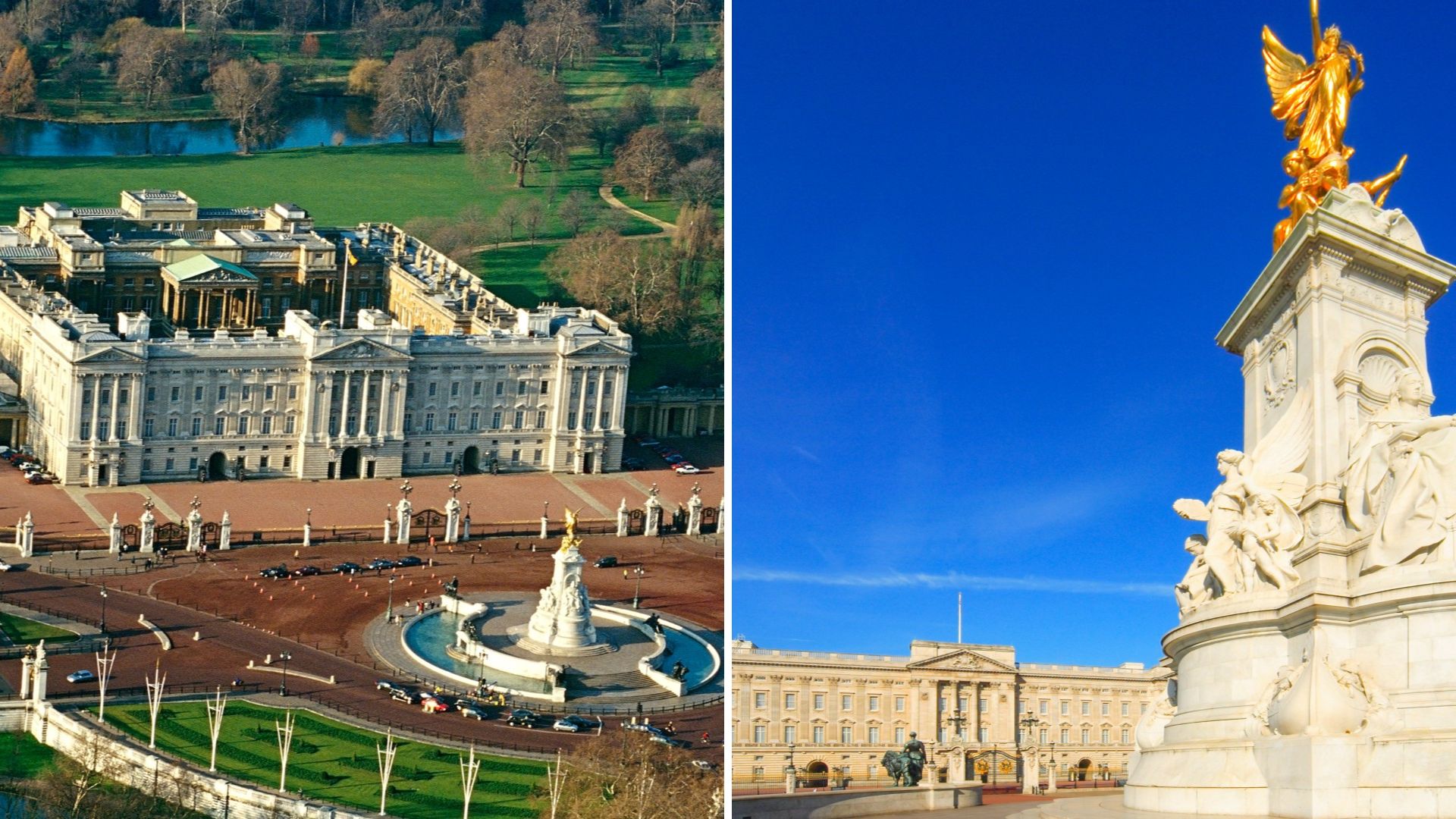 32 fascinating facts about Buckingham Palace that you may not know
32 fascinating facts about Buckingham Palace that you may not knowIt's one of the most famous properties in the world, and there's plenty of surprising facts about Buckingham Palace
By Jack Slater
-
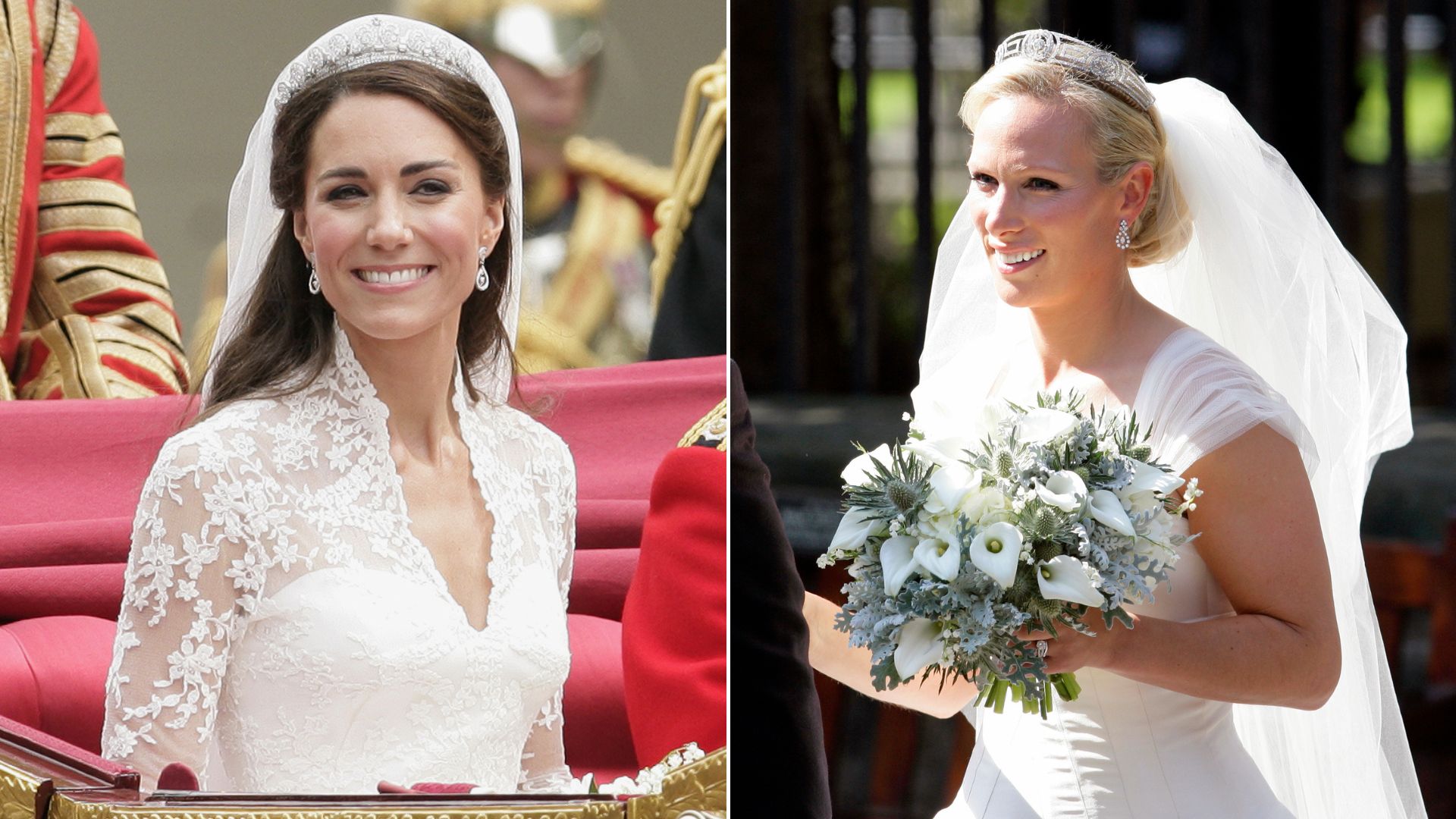 Royal brides and their 'something blue': From Kate Middleton's secret detail to Zara Tindall's protocol-breaker
Royal brides and their 'something blue': From Kate Middleton's secret detail to Zara Tindall's protocol-breakerMany royal brides' 'something blue' isn't noticeable to anyone else but they've included it as a special nod to the wedding tradition
By Emma Shacklock
-
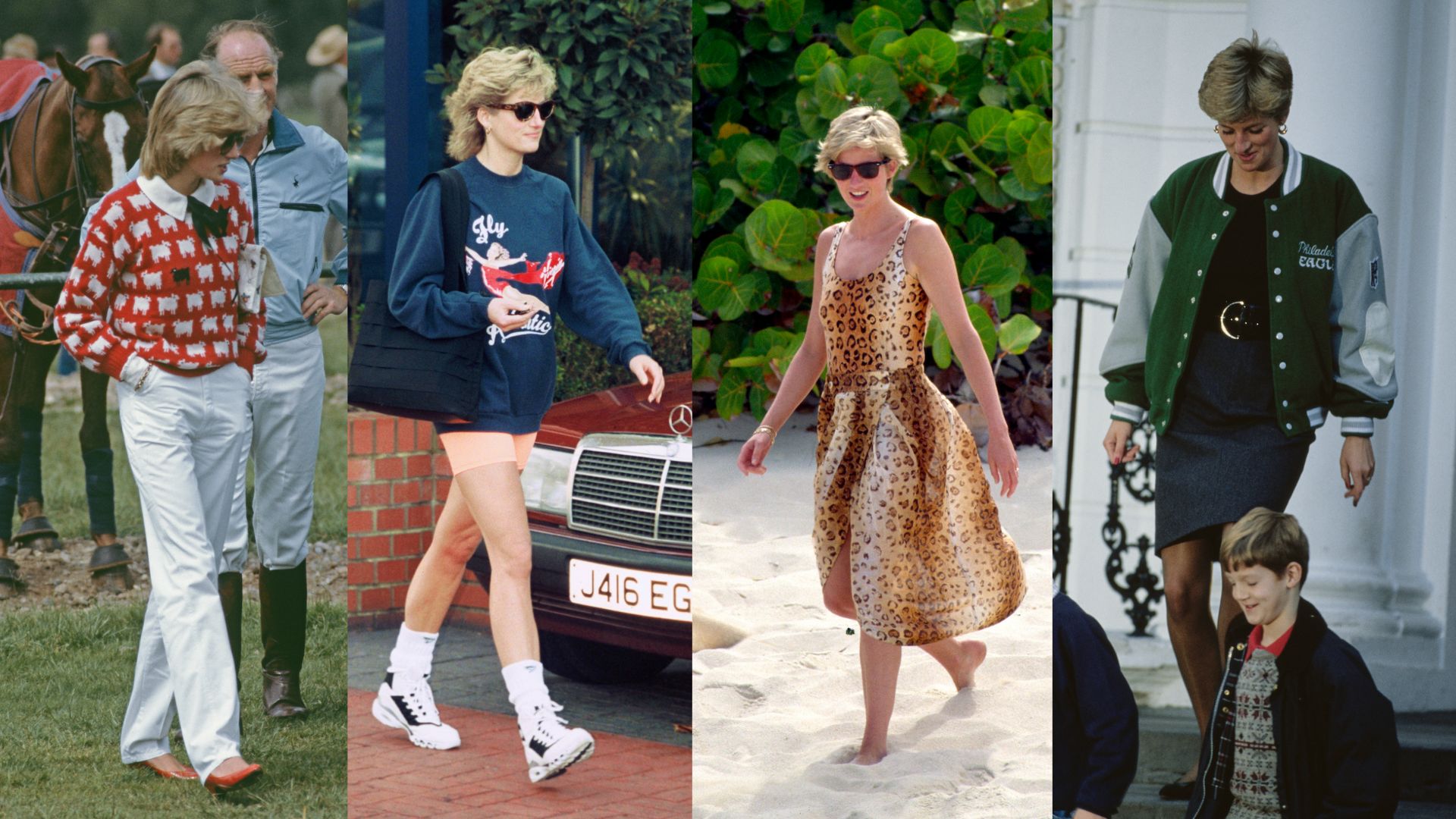 Here are 32 of Princess Diana's off-duty outfits that never went out of style, from varsity jackets to cycling shorts
Here are 32 of Princess Diana's off-duty outfits that never went out of style, from varsity jackets to cycling shortsPrincess Diana's off-duty outfits - from the school run to the gym - are proof that she was the queen of cool...
By Lauren Clark
-
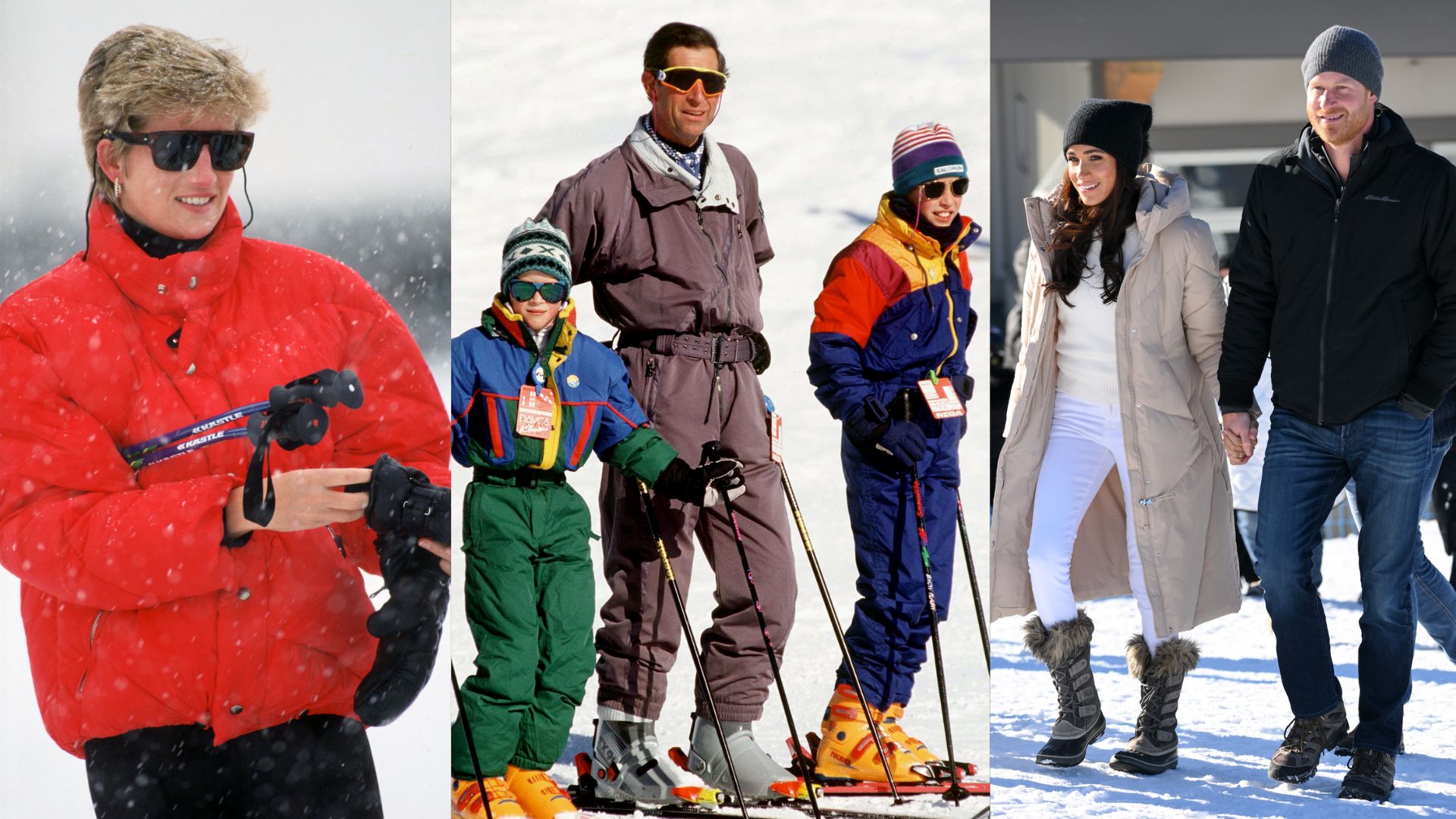 Best royal moments in the snow, from Princess Diana on the ski slopes to the Sussexes at the Invictus Games
Best royal moments in the snow, from Princess Diana on the ski slopes to the Sussexes at the Invictus GamesThese are the best royal moments in the snow caught on camera...
By Lauren Clark
-
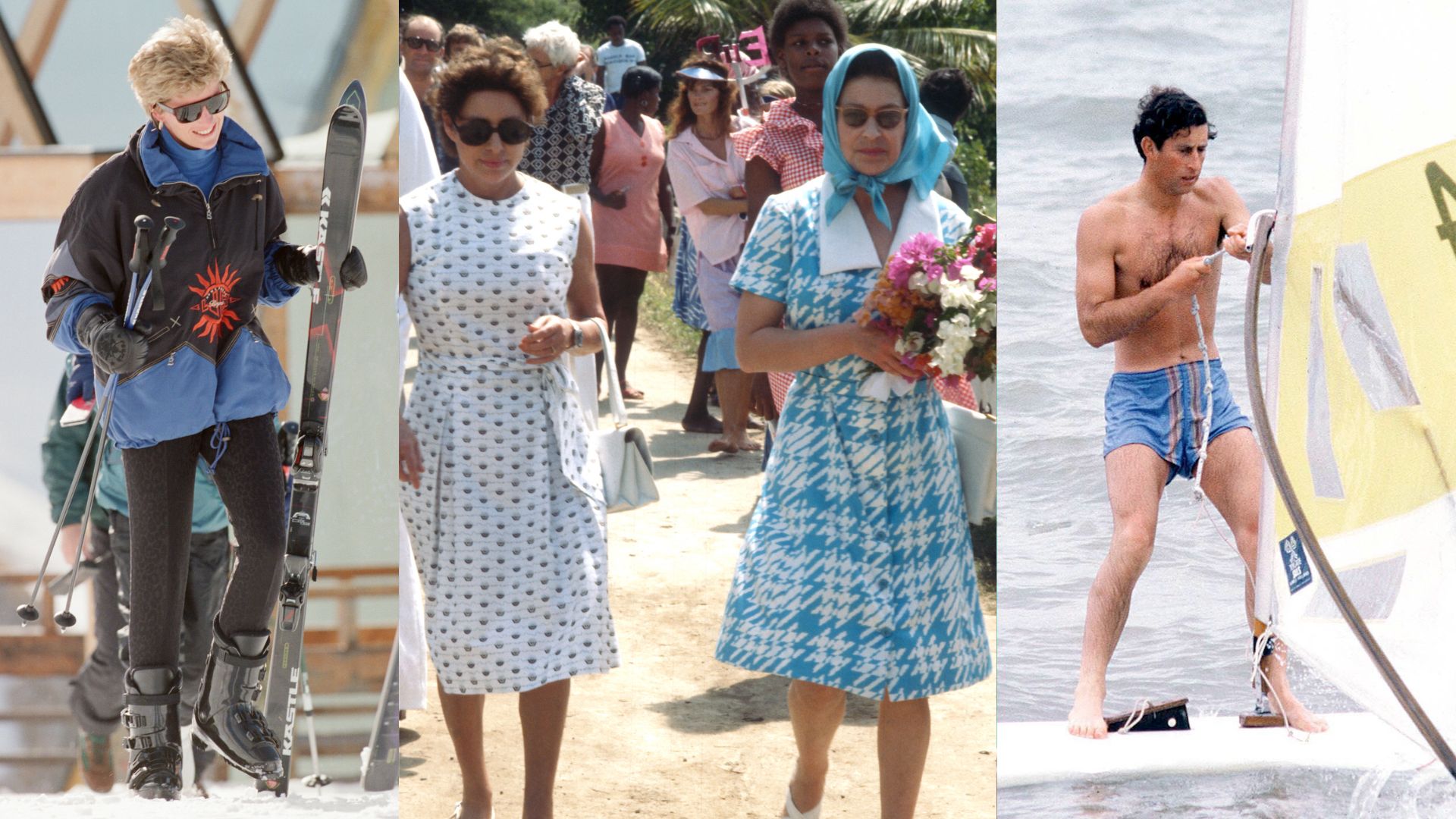 These are the royals' favourite holiday destinations, from the Bahamas to Botswana
These are the royals' favourite holiday destinations, from the Bahamas to BotswanaWant to know how the other half vacations? These are the royals' favourite holiday destinations...
By Lauren Clark
-
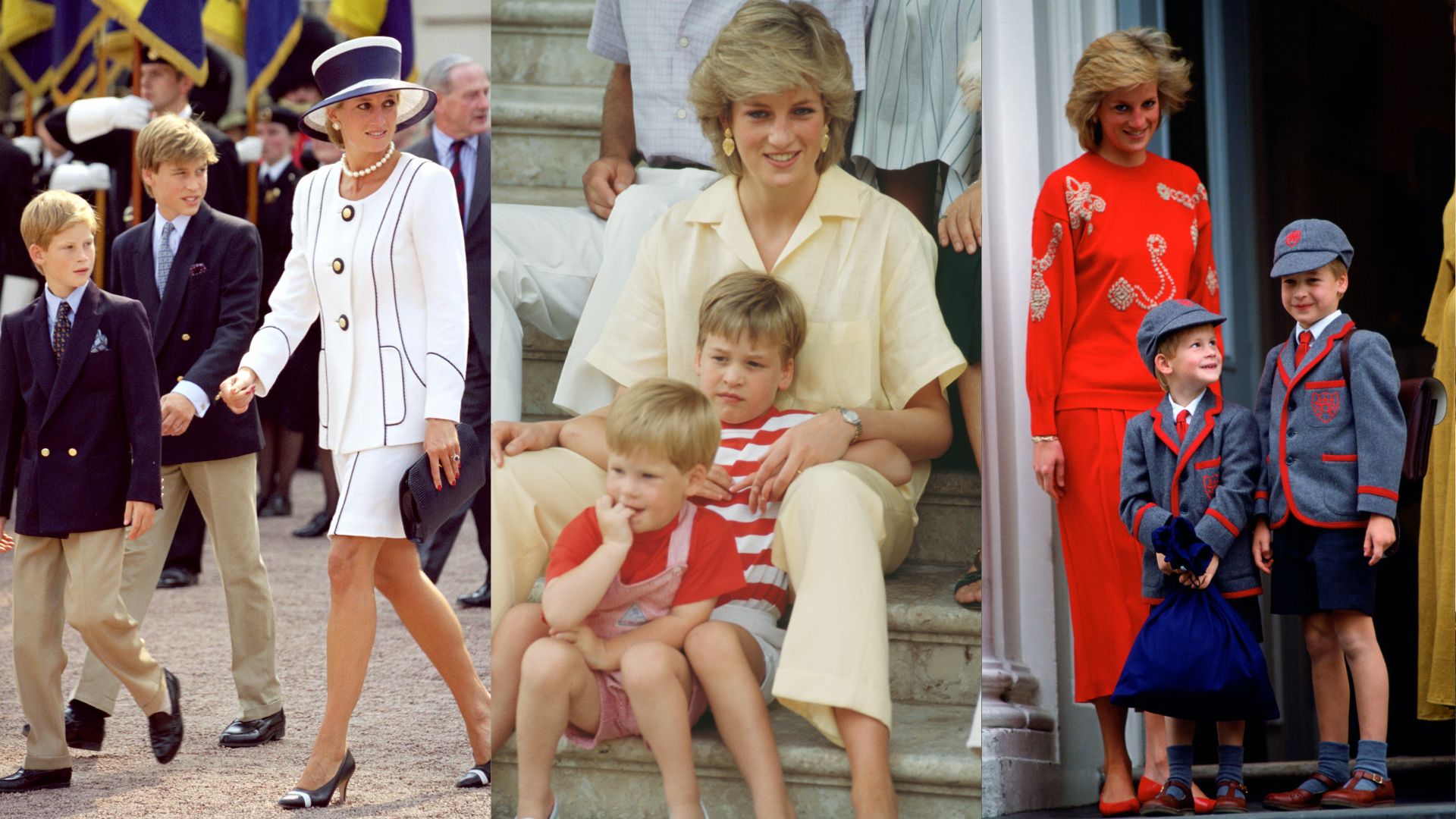 Princess Diana's cutest moments with Harry and William, from starting school to summer holidays
Princess Diana's cutest moments with Harry and William, from starting school to summer holidaysAll of Princess Diana's cutest moments with Harry and William rounded up...
By Lauren Clark
-
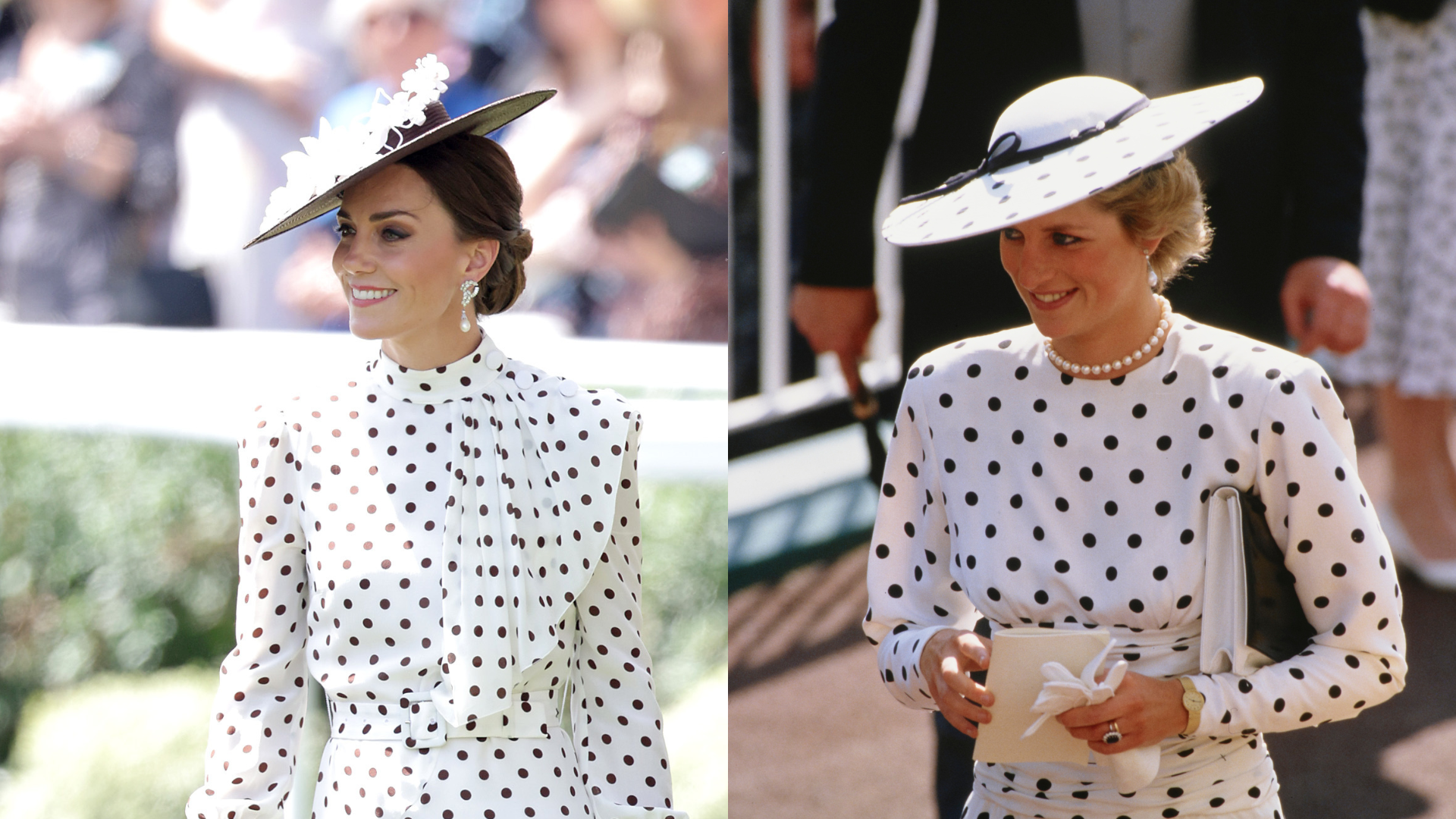 Kate Middleton and Meghan Markle's royal fashion is 'Diana cosplay' that's become a 'staple' in the Firm, royal expert claims
Kate Middleton and Meghan Markle's royal fashion is 'Diana cosplay' that's become a 'staple' in the Firm, royal expert claimsA royal expert has said that 'Diana cosplay' inspires Kate Middleton and Meghan Markle's royal wardrobe, so 'Diana's shine rubs off on them'
By Laura Harman